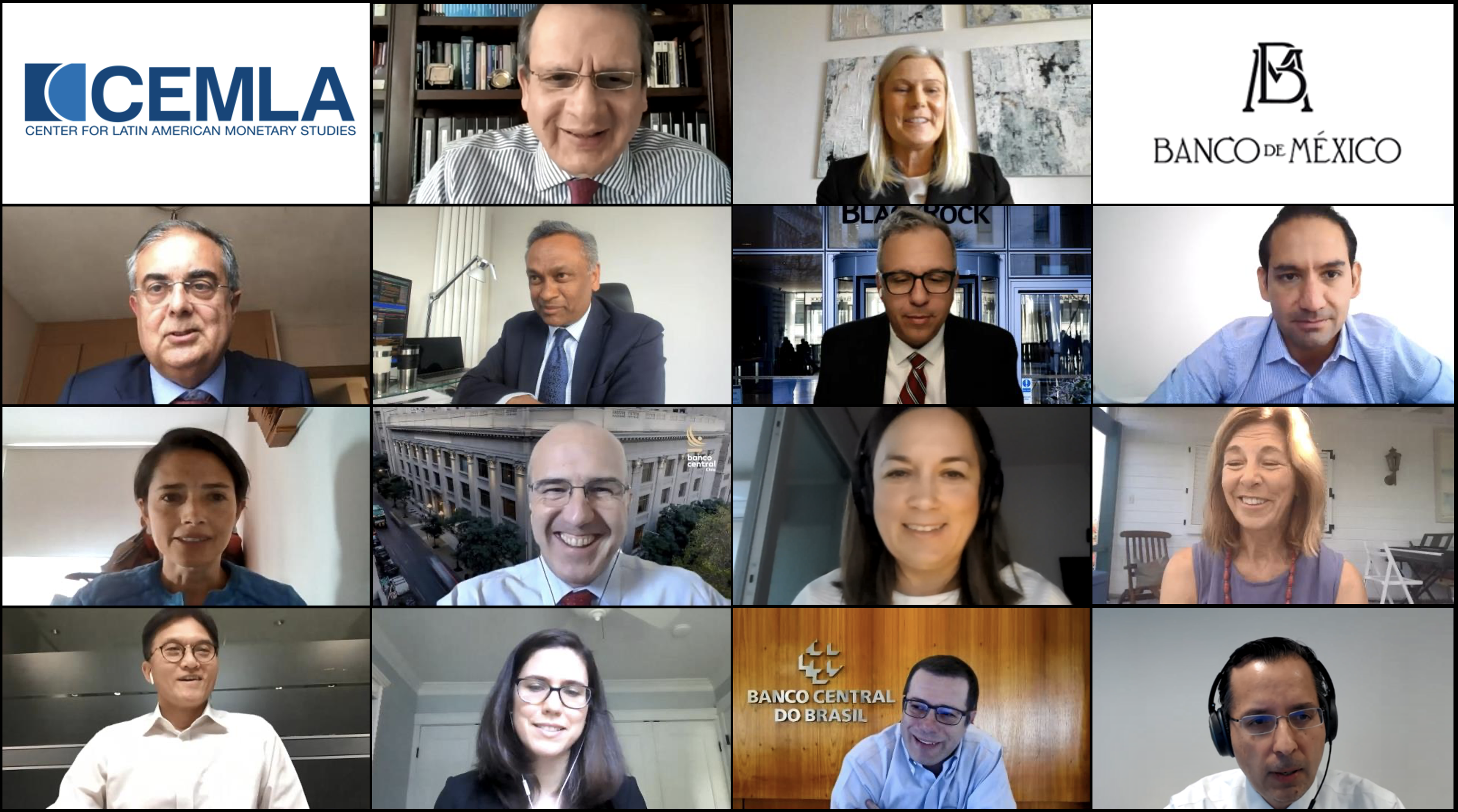XIV (Digital) Meeting on International Reserves Management
CEMLA and Banco de México
April 14, 15 and 16, 2021
Dr. Manuel Ramos-Francia, General Director of CEMLA, delivered the opening remarks. He started by recalling that in the past decade and a half, for a variety of reasons, there has been a marked increase in the balances of various central banks, both among advanced economies (AEs) and emerging market economies (EMEs). For most EMEs, the element that has played the most important role is their International Reserves (IR). In effect, managing and accumulating IR have become increasingly challenging tasks. As is known, central banks accumulate and hold IR for several reasons, including for self-insurance, to signal confidence to investors, and for precautionary motives. There are two key aspects to IR: the management of their portfolios and their use, as for instance, when intervening in the foreign exchange market for liquidity provision purposes.
Dr. Ramos-Francia then divided the rest of his remarks into two topics: first, the macroeconomic environment and, second, the possibility of market tantrums. The COVID-19 crisis has taken a toll on economic growth. Global real GDP fell by 3.3 percent in 2020, against the backdrop of several economic policies set in place, led by fiscal authorities, in response to the pandemic. Central banks have played a crucial role by providing liquidity and enabling credit to continue flowing, as well as in maintaining financial stability. The use of IR to provide adequate liquidity in the foreign exchange market, under conditions of systemic stress, has been key in stabilizing financial markets. This has shown once more that there are significant benefits to IR accumulation. Thus, a relevant topic is to understand the macroeconomic environment under which IR accumulation takes place.
The economic impact of the pandemic has been severe for most economies. Going forward, expected economic recoveries will be varied, or divergent as the IMF has called it. Moreover, with a few exceptions, recoveries in our region are not promising. A related question is whether U.S. inflation and the current financial conditions can give rise to renewed market tantrum episodes. All the elements seem to be there: rising inflation expectations, term premia, and long-term interest rates; and poor economic growth prospects in most of our region's economies. Furthermore, liquidity conditions in most financial markets in the region can dry up swiftly in times of financial stress. Hitherto, the shift in investment settings has been gradual and not too painful, on top of the Federal Reserve acting and communicating to keep financial markets functioning. In the future, conditions for IR accumulation may not be as benign as in the last few years. One hopes that adjustments such as portfolio re-balancing will continue to take place in an orderly fashion for the most part. That said, we have to prepare for possible challenges ahead.
For her part, Anna Nordstrom, Senior Vice-President of the Markets Group of the FRBNY, provided participants with an overview of the Federal Reserve’s facilities to support global U.S. dollar liquidity. She mentioned that the global U.S. dollar funding conditions are important to the Federal Reserve (Fed) as the U.S. dollar liquidity has a role in the stability of the global financial system. She explained two of the mechanisms through which the Fed has alleviated the strains on dollar funding during the pandemic.
On the one hand, the Fed has used standing U.S. dollar swap lines and set them with other institutions such as the central banks of Mexico and Brazil. On the other hand, she highlighted the role of a second mechanism: the FIMA repo facility. She noted that with this facility, the Fed can supply U.S. dollar liquidity in exchange for Treasury securities held by foreign central banks. The facility has reduced the need for central banks to sell such securities under adverse market conditions. Lastly, Ms. Nordstrom explained that the U.S. dollar has maintained its central role in the international monetary system despite some changes in the role of other currencies in central banks’ reserves, international debt issuance, and global payments.
Emiliano González Mota, Director of the Operations Department of Banco de España, focused on the challenges and opportunities the managers of IR have been facing in the context of the monetary policy response to COVID-19. He first summarized the monetary policy measures adopted by the European Central Bank (ECB). He highlighted four main measures: asset purchases, liquidity-providing operations, collateral easing, and the reactivation and provision of new FX swaps and repo lines with other central banks. Importantly, Mr. González Mota argued that these measures were not very different from those adopted in other countries. Regarding some of the challenges, he mentioned that the pandemic outbreak has increased liquidity concerns in the short-term. He also stated that there is a concern for a reflation scenario. As for the opportunities for reserve managers that the crisis has opened, he emphasized the incorporation of socially-responsible investing (SRI) principles.
In the second session of the first day, the meeting included the perspectives of three private sector representatives. First, Arnab Das, from Invesco, provided a broad overview of how he thinks the world will be organized around international currencies. While he considers that the U.S. dollar will keep playing a preponderant role, he thinks that the renminbi (RMB) is in a position to gain some market share as one of the leading currencies, even ahead of the euro, which has institutional barriers that may prevent an increasing role as an international currency.
Axel Christensen, from BlackRock, gave a global market outlook for IR managers with a focus on the Latin American challenges. First, he showed that, despite COVID-19, last year was a good one for the return of financial assets, including those in which IR are usually invested in. But, in contrast to last year, this one has not presented an encouraging picture. Second, he stressed the relevance of the vaccination rollout for the economic recovery and how, for example, the delay in Europe’s vaccination rollout may increase the risk of a slowdown of the region's recovery. Mr. Christensen mentioned the fiscal support undertaken by the U.S. and the European governments: he estimates that the fiscal response has been four times greater than the one provided during the global financial crisis (GFC). Moreover, he highlighted that while the U.S. debt levels have reached historical records, this has not been reflected in an increase in U.S. interest costs yet.
Kurtulus Taskale Diamondopoulos, from the World Gold Council, gave a perspective of gold as a reserve asset, emphasizing its role beyond crises. She gave her view on the demand for gold from both central banks and other investors after the pandemic outbreak.
On the second day of the meeting, Gerardo García López, General Director of Central Banking Operations of Banco de México, explained the reserve management objectives, i.e., the preservation of capital, and the strategy through which Banco de México allocates assets. He highlighted that since 2018, the central bank has moved from a backward-looking strategy to a more forward-looking one, relying on information from financial market prices (e.g., returns backed out from option prices). He showed some of the work made by the reserves’ management team in improving the optimization models. He underscored the use of non-parametric models of the marginal distributions of financial assets and the use of indicators that focus on the left tail of the returns’ distribution. In the second part of his presentation, Mr. García López gave an overview of the challenges that the central banks in the region will face during the transition from the pandemic to a potential U.S. reflation scenario characterized by an increasing path of interest rates.
Pamela A. Cardozo Ortiz, Chief Officer for Monetary and International Investment at Banco de la República (Colombia), explained the bank’s approach to managing IR. She explained how the central bank determines, in general, the adequate level of IR. This level is the one that, in addition to the IMF’s Flexible Credit Line (FCL) resources available to the central bank, would cover: the current account deficit, the need for funds to cover one-year of external debt amortizations, and the estimated capital outflows from non-residents based on a stressed scenario. Second, she pointed out that the central bank uses an asset allocation framework with two tranches. The short-term tranche is used to achieve liquidity goals. The medium-term tranche is used to maximize returns in U.S. dollars. In particular, to determine the adequate level of the short-term tranche, the central bank has adapted the IMF’s methodology on reserve adequacy. Ms. Cardozo Ortiz also mentioned that for the portfolio selection, the reserve’s management team uses the Black-Litterman methodology.
For his part, Beltrán de Ramón, Director of the Financial Markets Division of the Banco Central de Chile (BCCh), explained that Chile has been affected by two consecutive shocks: first, the social protests during October 2019 that led to a constitutional referendum that was held in October 2020, and second, the COVID-19 global shock. As an immediate measure, the BCCh requested a FCL to the IMF, for about twenty-four billion dollars. He explained that the FCL allowed the central bank to address short-term liquidity needs and to review a new level of IR. Mr. de Ramón briefly presented the new plan of the BCCh to accumulate an additional twelve billion dollars in IR. The rationale for such a program lies in the increased risks the Chilean economy is now facing. He also explained that the reserve accumulation program is consistent with both its inflation target monetary policy framework and with its floating exchange rate regime.
Monika Znidar, from the Bond Markets and International Operations Division of the Directorate General Market Operations of the European Central Bank (ECB), provided an overview of the ECB’s foreign reserve management. First, she highlighted that the reserves portfolio consists mostly of foreign international currencies. Second, she pointed out that the main purpose of the portfolio is to ensure that the ECB is able to conduct FX operations. Remarkably, few FX interventions have been implemented by the ECB since 1999, and the last one was conducted more than ten years ago. Ms. Znidar also commented that the ECB follows a decentralized management strategy, with national central banks operating a proportional part of the total reserves, and that the main investment guideline is to preserve liquidity.
During the first session of the last day, there were three invited talks. Jennifer Johnson-Calari, formerly at the World Bank, and co-architect of the Reserve Advisory and Management Partnership (RAMP), examined the compatibility of adding an ESG investment objective to central banks’ standard IR management constraints, namely liquidity and capital preservation. She mentioned that there is a keen interest from the central bank community in adding ESG investment objectives, although she believes that there is a potential liquidity issues in bonds with narrow green objectives, particularly if there is a change in market preferences. For this reason, she believes that investment in green bonds is more appropriate for an investment tranche rather than across a whole IR portfolio.
For his part, Chi Lo, from BNP Paribas, explained the new policy shift in China, which aims to sustain long-term output growth in the face of strategic competition against the U.S. The main features of this new policy, known as “dual circulation,” are to strengthen the domestic sector and to reduce the reliance on the former export-led growth model. Mr. Lo pointed out that while China will remain a key economy for global growth, it will become less important in driving commodity prices in the post-COVID world. In his view, a potential new commodity super-cycle would stem from Western demand for infrastructure rather than from China. He expects Chinese demand for raw materials and energy to continue to decline in subsequent years.
Katelyn Gallagher, from BlackRock, presented a factor-based investment framework for reserve managers. In a nutshell, factor investment involves targeting specific drivers of return across asset classes (macro factors) and within asset classes (style factors). In particular, Ms. Gallagher pointed out that BlackRock uses the following macro factors: economic growth, real rate, inflation, credit, emerging markets, and liquidity; and the following style factors: value, quality, momentum, minimum volatility, size, and carry.
The last session of the conference was the Policy Round Table with Dr. Manuel Ramos Francia (CEMLA) as the chair, Beltrán de Ramón (Banco Central de Chile), Gerardo García López (Banco de México), Pamela A. Cardozo Ortiz (Banco de la República), and Marcelo Martinelli (Banco Central do Brasil). Dr. Manuel Ramos Francia provided participants with an overview of the most relevant current macroeconomic conditions with a focus on the U.S. situation and some of the challenges that the Federal Reserve will be facing in the years to come. In particular, he described three potential scenarios. The first scenario is one in which inflation continues its current trend and remains at a low level. He stated that such a scenario would not lead a substantial revision of the monetary policy by the Federal Reserve. Having said that, he noted that there are some indications that inflation could be higher than it is today in the medium-term. Such a situation could give rise to a reflation scenario, characterized by higher interest rates with a relatively stronger U.S. dollar. This would lead to more pressure in EMEs, particularly in Latin America. The third potential scenario is one in which the inflation rate rises even higher. Dr. Ramos Francia explained that the recent discussion about whether the fiscal stimulus to support the COVID-19 economic recovery in the U.S. would lead to a positive output gap is relevant to determine how likely these scenarios are. In that context, he asked the presenters to comment on the investment challenges that the managers could be facing in the years to come.
Beltrán de Ramón commented that he thinks that a moderate inflation scenario in the U.S. is the most likely. Importantly, he mentioned that BCCh is in a relatively good position to face the challenges ahead. First, he thinks that the Fed will act timely to control any excessive inflation pressures. Second, Chile’e public debt-to-GDP ratio is around 25 percent. Thus, its fiscal authorities have fiscal room to act if warranted. However, he alerted that there might be some political uncertainty ahead.
Gerardo García López warned that, apart from the U.S. inflation, we need to follow the evolution of the pandemic, which is not over yet, and most likely will involve additional waves in the Latin American economies. Also, he commented that the post-COVID fiscal stimulus in México was one of the lowest in the world (around 1 percent of GDP) and that the country has room for further fiscal policy.
Pamela A. Cardozo Ortiz explained that Banco de la República is closely monitoring the evolution of the events in the U.S. economy and that these may shape the bank’s monetary policy response. Regarding the management of international reserves, Ms. Cardozo Ortiz mentioned that the current approach would allow the central bank to react to any of the scenarios explained by Dr. Ramos Francia. She mentioned that Colombia faces a challenging fiscal situation as the expected fiscal deficit for the current year is greater than the one registered in 2020. In addition, they expect no profit-sharing from the central bank to the Treasury this year.
Mr. Marcelo Martinelli mentioned that most people expect a slight rise in inflation as shown by the mild rise in inflation expectations. For him, this scenario is in line with Fed’s medium run objectives. Martinelli pointed out that the discussion raised by Dr. Ramos Francia is more relevant than ever for IR managers. First, a scenario of higher inflation will force managers to consider a greater diversification in asset classes beyond AEs’ government bonds. Second, he thinks that the trend to reduce the exposure to the U.S. dollar will continue, especially in the direction of the RMB.
April 14, 2021
Opening Remarks ![]()
Manuel Ramos-Francia, Director General, CEMLA
Session I. Investment Managers’ Perspectives I
U.S. Dollar Global Liquidity and Fed’s International Facilities
Anna Nordstrom, Senior Vice-president, Markets Group, Federal Reserve Bank of New York.
Challenges and Opportunities for International Reserves Managers after the Monetary Policy Response to COVID ![]()
Emiliano González Mota, Director, Operations Department, Banco de España.
Session II. Private-Public Dialogue
The Investment Setting for International Reserves’ Managers in the Times of COVID ![]()
Arnab Das, Invesco.
What Should International Reserves Managers be concerned About? ![]()
Axel Christensen, Director, Black Rock.
Gold as a Reserve Asset ![]()
Kurtulus Taskale Diamondopoulos, Director, Gold Council.
April 15, 2021
Session III. Investment Managers’ Perspectives II
International Reserves Management: The Mexican Case
Gerardo García López, Director General, Central Bank Operations Directorate General, Banco de México.
The Colombian Approach to International Reserves Management ![]()
Pamela A. Cardozo Ortiz, Chief Officer for Monetary and International Investment, Banco de la República (Colombia).
Reserve Adequacy: The Case of Chile ![]()
Beltrán de Ramón, Director of the Financial Markets Division, Banco Central de Chile.
The ECB’s International Reserves Management ![]()
Monika Znidar, Team Lead in the Bond Markets & International Operations Division of the Directorate General Market Operations, European Central Bank.
April 16, 2021
Session IV. Invited Talks
International Reserves and ESG Investment ![]()
Jennifer Johnson-Calari, Consultant JJC, ex-WB, RAMP’s co-architect.
China’s Outlook ![]()
Chi Lo, Senior economist, Greater China, BNP Paribas.
Factor-Based Investment ![]()
Katelyn Gallagher, Director, Black Rock.
Session V. Policy Roundtable. Challenges for International Reserves Investments
Chair: Manuel Ramos-Francia, Director General, CEMLA.
- Beltrán de Ramón (Chile)
- Gerardo García López (México)
- Pamela Cardozo (Colombia)
- Marcelo Martinelli (Brazil)
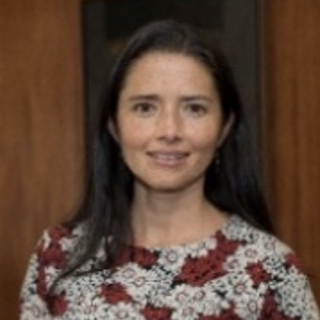
Pamela Andrea Cardozo
Pamela Andrea Cardozo has been Chief Officer for Monetary and International Investment in Banco de la República since October 2010. Previously, she was a researcher in the Monetary and Reserves Division in 2010, and a professional in Capital Markets from 2002 to 2005, both in Banco de la República. Pamela Cardozo obtained her Ph.D. in Economics from Queen's University. She holds a Master in Economics and a B.Sc. in Industrial Engineering, both from the University of Los Andes in Bogotá, Colombia.
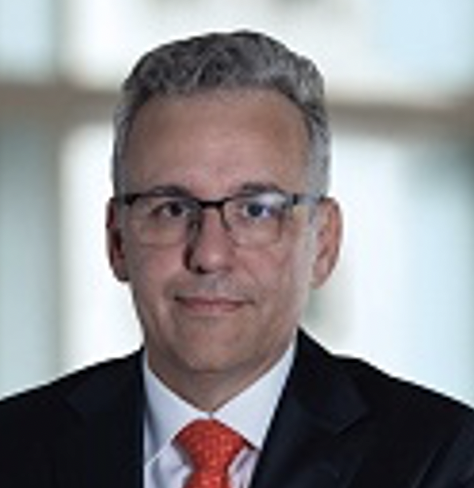 Axel Christensen
Axel Christensen
Axel Christensen is Chief Investment Strategist for Latin America for BlackRock. He is also a member of the Latin America Executive Committee. Mr. Christensen's service with the firm dates back to 2009, including time with Barclays Global Investors (BGI), which merged with BlackRock in December, 2009. Prior to joining the firm, he was Chief Executive Officer for Cruz del Sur Inversiones, the financial services unit of largest industrial group in Chile, from 2008 to 2009. From 2002 to 2007, he was Partner and Managing Director at Moneda Asset Management, the largest independent asset management firm in Chile. Mr. Christensen also was the Chief Investment Officer at AFP Cuprum, one of Chile's largest pension fund managers, from 1997 to 2002. Between 1992 and 1997, he also held positions at Citicorp, McKinsey and Banco de Santiago.
Mr. Christensen currently serves as a member of the Advisory Council on Capital Reform for Chile's Finance Ministry. He has also been a member of the Presidential Committee for Pension Reform in 2006, as well as an advisor to the World Bank and to the Finance Ministry and Securities regulator in Chile. He was nominated to the Global Young Leaders program of the World Economic Forum in 2008. Mr. Christensen earned an industrial engineering degree (with distinction) from the Catholic University of Chile in 1992 and an MBA from Stanford University in 1996, where he was an Arjay Miller Scholar.
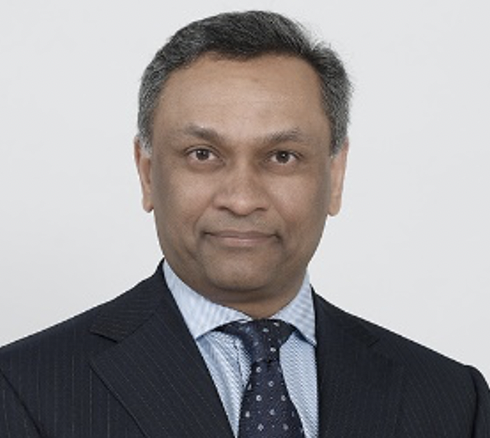 Arnab Das
Arnab Das
Arnab Das is Global Market Strategist and a member of Invesco’s Global Thought Leadership team. He helps develop and communicate analysis and insight on the global economy and financial markets across asset classes for clients, media, governments and central banks. He works with Invesco’s investment teams across disciplines and regions and is a member of Invesco’s Global Investor Forum Advisory Council with a focus on global macro and emerging markets. Arnab’s research interests span economic policy, performance and reform; and economic and financial history.
Arnab joined Invesco in 2015 as Head of EM macro research for Invesco Fixed Income. He began his career in finance in 1992, and has served as Co-head of Economic Research & Strategy at Roubini Global Economics; Co-head of Global Economics & Strategy, Head of Global FX Research, and Head of EM Economics & Strategy at Dresdner Kleinwort; and Head of EEMEA Research at JP Morgan. He has also been a private consultant in global and emerging markets, as well as consulting with Trusted Sources, a specialist EM research boutique.
Arnab’s studies were in macroeconomics, economic history and international political economy. He received an AB from Princeton University in 1986 and completed his postgraduate and doctoral work at the London School of Economics in 1987-1992.
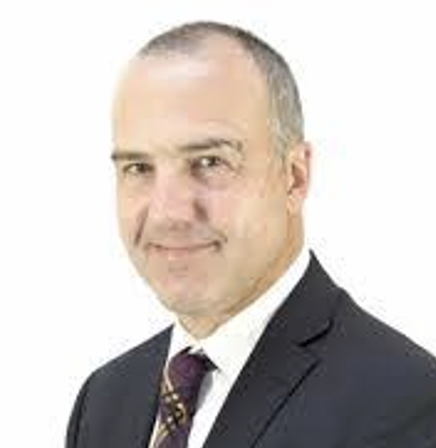 Beltrán de Ramón
Beltrán de Ramón
Beltrán de Ramón is the Manager of the Financial Markets Division of the Banco Central de Chile since January 2008. De Ramón is a Commercial Engineer from the Catholic University with a distinction in Economics. Previously, he served as Manager of National Financial Markets of the Banco Central de Chile since July 2005. He also worked for three years in the Budget Directorate of the Ministry of Finance, as the Head of the Public Finance Division. Likewise, he represented that Ministry as Director of the Public Companies System (SEP, for its acronym in Spanish) and was Director of the National Mining Company (ENAMI). Previously, since 1990 he held various positions at Copec S.A., serving between 1996 and 2001 as Head of Treasury and Subsidiaries.
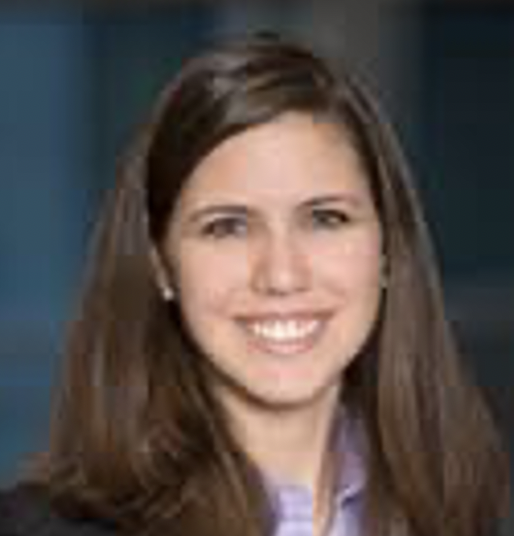 Katelyn Gallagher
Katelyn Gallagher
Katelyn Gallagher is a senior investment strategist in BlackRock's Factor-Based Strategies Group. In this role she is responsible for communicating the breadth and depth of the company's risk parity and long/short style factor capabilities to institutional investors in North America.
Prior to her current role, Ms. Gallagher was a member of BlackRock's Client Portfolio Solutions team, focused on portfolio construction, asset allocation, and providing custom solutions to BlackRock's sophisticated institutional investors. Before joining BlackRock in 2014, Ms. Gallagher was a Vice President in Risk Management at Barclays. She was responsible for supporting the hedge fund counterparty credit risk team with quantitative analysis, including VaR-based risk, stress testing, portfolio analysis and margin methodology validation. During her time at Barclays she worked closely with IT to develop the stress testing engine used to monitor hedge fund counterparties' traded portfolios. Ms. Gallagher began her career at Lehman Brothers.
Ms. Gallagher holds a BA with Honors and Distinction in both Mathematics and Economics from University of North Carolina at Chapel Hill.
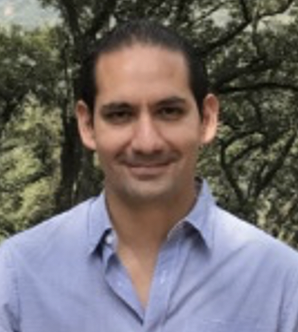 Gerardo García López
Gerardo García López
Gerardo García is the General Director of Central Banking Operations of Banco de México, and as such, is responsible for the implementation of monetary policy, exchange rate policy, and the investment of the Central Bank’s foreign currency reserves. The Central Bank is also the financial agent of the Federal Government; therefore, Mr. García is also responsible for conducting debt management operations, executing FX transactions, and implementing hedging programs on behalf of the Mexican Government. His former responsibilities included the management of the International Operations Division of the Central Bank. Mr. García holds a B.A. degree in Economics from the Instituto Tecnológico de Monterrey (1999) and a Master in Business Administration (MBA) degree from Yale University (2005).
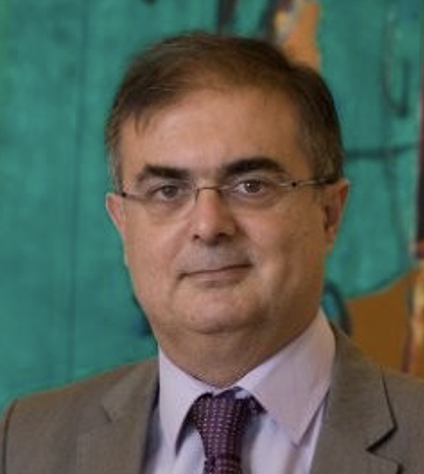 Emiliano González Mota
Emiliano González Mota
Emiliano González Mota is currently director of the Operations Department at Banco de España, institution where he has an extended professional career. Former Director of the Governors Office at Banco de España, he had previously served as Head of the International Financial Markets Division and Economist at the General Directorates of Economic and Statistics, International Affairs and Operations.
He has participated in Committees and Working Groups both in the context of the European Central Bank and in that of the Bank for International Settlements. To mention some, the International Relations Committee and the Markets Operations Committee (ECB) and a Global Financial Stability Committee Working Group (BIS) on Asset encumbrance, financial reform and the demand for collateral assets.
Holding a degree in Economics and Business Science from the University of Alicante (Spain), he has completed the Postgraduate Program on Economic Analysis from Universidad Autonoma de Barcelona and on Monetary Economy from the University of Pennsylvania (E.E.U.U.). He has been Professor Associate of Economics at the Universidad Autonoma de Madrid, where he regularly participates in the Postgraduate programs.
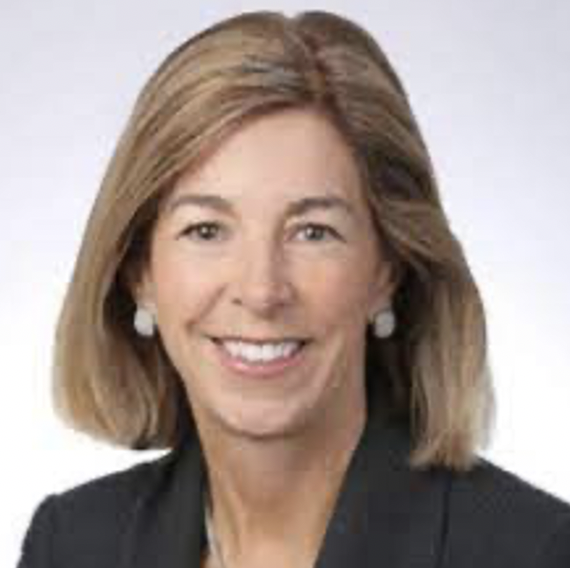 Jennifer Johnson-Calari
Jennifer Johnson-Calari
Ms. Johnson-Calari created and led the World Bank’s Reserves Advisory and Management Program (RAMP), which is one of the world’s leading providers of consulting and capacity building services to public sector asset managers. In this capacity, she worked globally with central banks, national pension funds and sovereign wealth funds in strengthening governance and building investment management capacity. She contributed to setting global standards of best practice for the management of sovereign assets and liabilities working with the IMF on the Reserves Management Guidelines and the ISWF’s “Santiago Principles”.
She began her career with the Board of Governors of the Federal Reserve System in banking supervision with a focus on commercial bank asset/liability and risk management issues. She has earned advanced degrees from the Harvard Business School (GMP, 2004) the Johns Hopkins School of Advanced International Studies (SAIS) (MA, 1981) and is a Chartered Financial Analyst (CFA). She currently serves as a consultant to several international financial institutions.
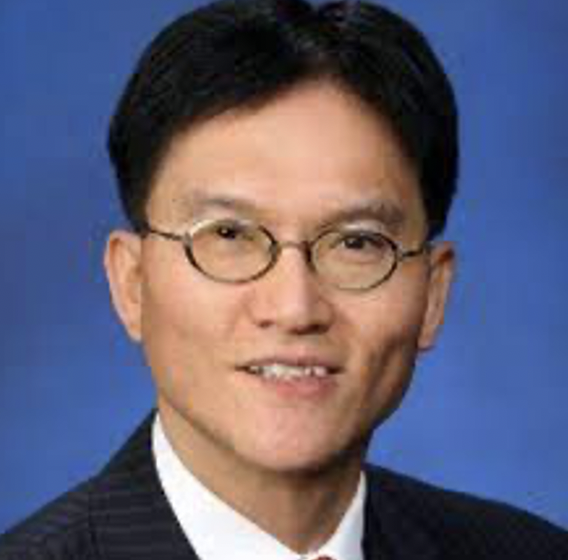 Chi Lo
Chi Lo
Chi Lo is the Senior Economist, Greater China of BNP Paribas Investment Partners based in Hong Kong. He joined BNP Paribas Investment Partners in 2010 through HFT Investment Management (HK), BNP Paribas Investment Partners’ joint venture partner in China.
Chi Lo has many years of international research experience in economics, financial markets and public policy & standards development, covering Asian and North American economies. He is the author of eight books on China and Asian economic development and markets. He has published research work in international periodicals and newspapers, and has appeared as a commentator on international media and speaker at international seminars, such as the World Economic Forum, Asian Development Bank, and House of Lords of the British Parliament. He has taught economics and finance courses at various universities in Hong Kong, and has spoken frequently at university finance courses and professional seminars in North America, Hong Kong and China. Chi’s latest book is “Chi Time on China and the RMB’s Future” (2014).
Prior to joining BNP Paribas Investment Partners, Chi Lo was Head of Overseas Investment at Ping An of China Asset Management (HK) Ltd. Chi’s other positions in Asia included Asia Research Head for the British private property fund Grosvenor, chief economist and strategist for Asia at Standard Chartered Bank and research director for Greater China at HSBC in Hong Kong.
Chi did his economics graduate work at the London School of Economics and Political Science (LSE) in England and the University of British Columbia (UBC) in Canada.
 Marcelo Cardoso Martinelli
Marcelo Cardoso Martinelli
Marcelo Martinelli is a senior advisor at the Foreign Reserves Department at the Banco Central do Brasil. He joined the Central Bank in 2003 and has been working in reserve management in various functions in the front and middle offices. He holds a degree in economics from the University of Sao Paulo (1994).
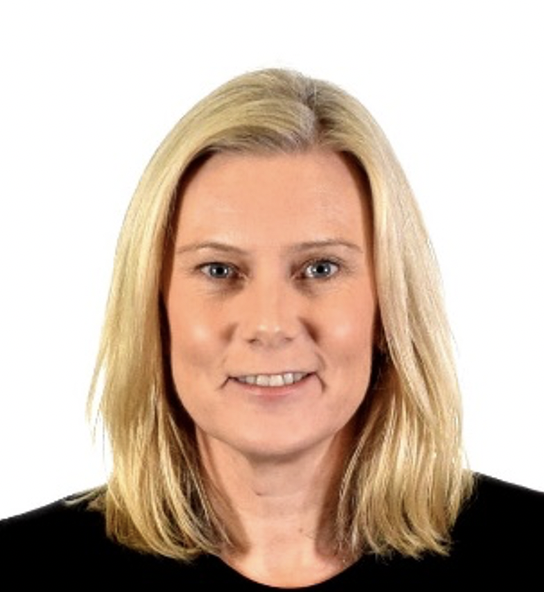 Anna Nordstrom
Anna Nordstrom
Anna Nordstrom is a Senior Vice President in the Markets Group of the Federal Reserve Bank of New York and Deputy Head of the Market Operations, Monitoring, and Analysis Function, overseeing International Markets. In this role, she oversees the Foreign Reserves Management Directorate, the Foreign Exchange and Global Markets Directorate, and the Foreign Exchange Committee (FXC). Together, these areas are responsible for managing the euro- and yen-denominated assets of the U.S. foreign-exchange reserves, executing U.S. foreign-exchange-related activities on behalf of the Federal Reserve System and the U.S. Treasury, managing the Federal Reserve’s central bank liquidity swap lines, monitoring and analysis of international financial market and policy developments, and contributing to the evolution of the FX Global Code. Ms. Nordstrom is an Ex Officio member of the FXC and represents the New York Fed on the Global Foreign Exchange Committee (GFXC).
Prior to joining the New York Fed in 2008, Ms. Nordstrom held positions at the European Central Bank, the International Monetary Fund, and the Central Bank of Sweden (Sveriges Riksbank). Ms. Nordstrom studied public administration at Umea University in Sweden.
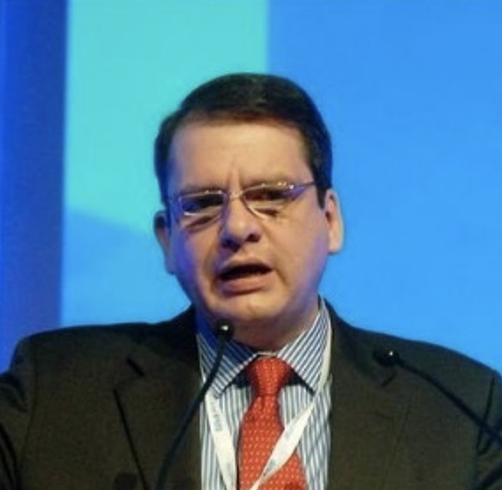 Manuel Ramos-Francia
Manuel Ramos-Francia
Manuel Ramos-Francia has a B.A. in Economics (with highest honors) from the Instituto Tecnológico Autónomo de México (ITAM). He was awarded a Fulbright Scholarship for graduate studies in the United States. He holds a Ph.D. in Economics from Yale University, where he graduated in 1993, specializing in Advanced Economic Theory and Financial Economics.
He has been Professor of Economics, having taught Advanced Macroeconomics, Open Economy Macroeconomics, Monetary Theory and Policy, and Financial Economics, and Director of the Center for Analysis and Economic Research at ITAM in Mexico. Dr. Ramos-Francia has held several positions at the Ministry of Finance: Deputy Minister (for Revenues), Chief Economist, and Chief Adviser to the Minister of Finance. He joined Banco de México in 2001, first serving as a Senior Adviser to the Board, then as Director General for Economic Research (Chief Economist) and, from April 2011 to December 2018, as Vice-Governor and Member of the Board. Currently, he is the Director General of the Center for Latin American Monetary Studies (CEMLA).
He has given seminars at Universities such as Yale Economics, Harvard Business, Harvard Law, Columbia Public Policy, the University of Chicago Business, and ITAM, among others. He has also given conferences and seminars at many central banks such as the Fed, the NY Fed, the Bank of Canada, the Bank of England, the Banque de France, and the central banks of Argentina, Peru, Guatemala, Turkey, and others, as well as at international financial organizations such as the IMF, the BIS, the World Bank, the IIF, and the IADB. Also, at organizations such as LACEA, LAMES, the International Economic Association (IEA), the Reinventing Bretton Woods Committee, and the Adam Smith Seminar. He has also been invited to be a member of the Bretton Woods Committee.
Manuel Ramos-Francia represented Mexico in the G20 Central Bank Deputies Group from 2010 to 2018. He was Chairman of the Deputies of the International Monetary and Financial Committee (IMFC) of the IMF from 2015 to 2017. Similarly, he presided over the Central Bank Deputies Group under Mexico’s G20 Presidency in 2012. He was given the Professional Merit Service Award from ITAM in 2009.
He has published various articles on monetary policy, fiscal policy, trade and applied econometrics in refereed economics journals such as: Journal of Money Credit and Banking, Economics Letters, Journal of Financial Stability, and Quarterly Journal of Finance, and many others, as well as in specialized books. He has refereed for journals such as: Journal of Money, Credit and Banking; Empirical Economics; Review of World Economics; International Journal of Economic Sciences and Applied Research; The World Economy; International Review of Economics and Finance; Economics Bulletin; Revista Cuadernos de Economía; Revista de Métodos Cuantitativos para la Economía y la Empresa; and, Economía Mexicana, Nueva Época.
He is Editor-in-Chief of the Latin American Journal of Central Banking Also, he was a member of the Association of the IJCB’s (International Journal of Central Banking) Management Committee.
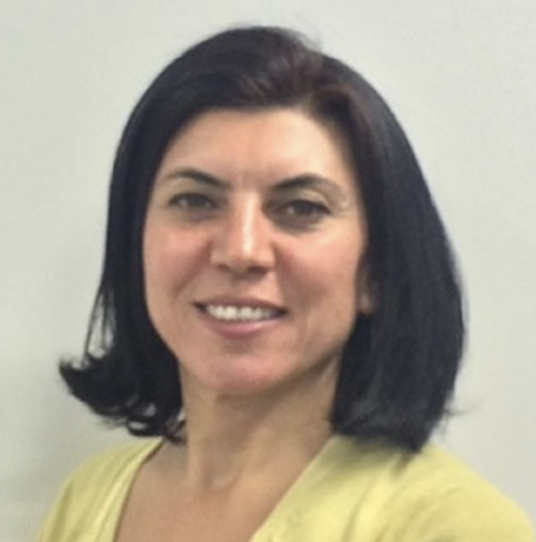 Kurtulus Taskale Diamondopoulos
Kurtulus Taskale Diamondopoulos
Kurtulus was formerly the Deputy Director of the FX Transactions Division, Markets Department of the Central Bank of the Republic of Turkey. Kurtulus worked at the central bank for 25 years holding various positions within the Markets Department as a reserve and risk management professional. She holds a BA degree in Economics from Middle East Technical University and an MA in International Economics and Finance from Brandeis University, Boston, USA.
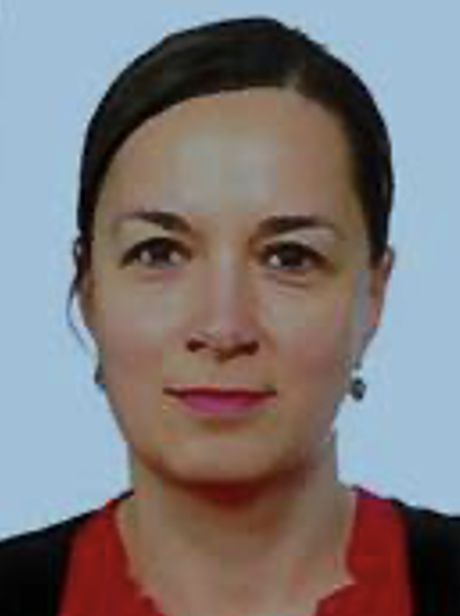 Monika Znidar
Monika Znidar
Monika Znidar, CFA, has been working for the European Central Bank since 2012 and is currently overseeing the management of ECB’s foreign reserves. Before that she was involved in the design and the implementation of the ECB’s asset purchase programmes and the management of the euro-denominated own funds portfolio.
Before joining the ECB. she worked as a portfolio manager for the Central Bank of Slovenia.
She graduated from the Faculty of Economics in Ljubljana, Slovenia and completed a Master’s programme in European Economic Studies at the College of Europe in Bruges, Belgium.


